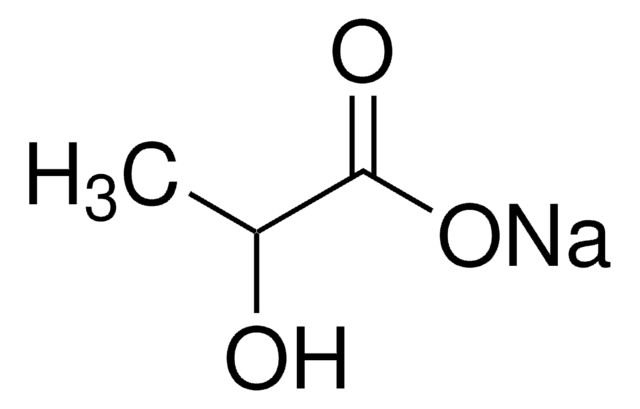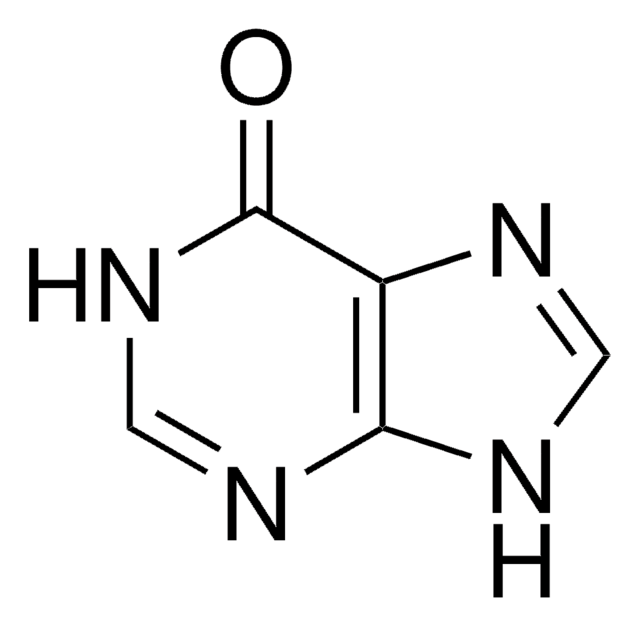P4562
Piruvato sódico
powder, BioXtra, suitable for mouse embryo cell culture
Sinónimos:
αÁcido α-cetopropiónico sodium salt, Ácido 2-oxopropanoico sodium salt, Ácido pirúvico sodium salt
About This Item
Productos recomendados
product line
BioXtra
Quality Level
assay
≥99%
form
powder
technique(s)
cell culture | embryo: suitable
mp
>300 °C (lit.)
solubility
H2O: 100 mg/mL
storage temp.
2-8°C
SMILES string
[Na+].CC(=O)C([O-])=O
InChI
1S/C3H4O3.Na/c1-2(4)3(5)6;/h1H3,(H,5,6);/q;+1/p-1
InChI key
DAEPDZWVDSPTHF-UHFFFAOYSA-M
¿Está buscando productos similares? Visita Guía de comparación de productos
General description
Application
- as a supplement in Ca2+ + N-Tris(hydroxymethil)methyl-2-aminoethanesulfonic acid (TES)–NaCl medium for sperm incubation
- as a supplement in TCM-199 hepes modification solution for cumulus-oocytes complexes (COC′s) culture
- as a supplement in Dulbecco′s modified Eagle medium (DMEM) to culture mouse primary hepatocytes (MPHs) and also to intraperitoneally inject fasted mice for glucose production assessment
Biochem/physiol Actions
signalword
Warning
hcodes
Hazard Classifications
Eye Irrit. 2 - Skin Sens. 1B
Storage Class
13 - Non Combustible Solids
wgk_germany
WGK 1
flash_point_f
Not applicable
flash_point_c
Not applicable
ppe
Eyeshields, Gloves, type N95 (US)
Certificados de análisis (COA)
Busque Certificados de análisis (COA) introduciendo el número de lote del producto. Los números de lote se encuentran en la etiqueta del producto después de las palabras «Lot» o «Batch»
¿Ya tiene este producto?
Encuentre la documentación para los productos que ha comprado recientemente en la Biblioteca de documentos.
Los clientes también vieron
Nuestro equipo de científicos tiene experiencia en todas las áreas de investigación: Ciencias de la vida, Ciencia de los materiales, Síntesis química, Cromatografía, Analítica y muchas otras.
Póngase en contacto con el Servicio técnico









